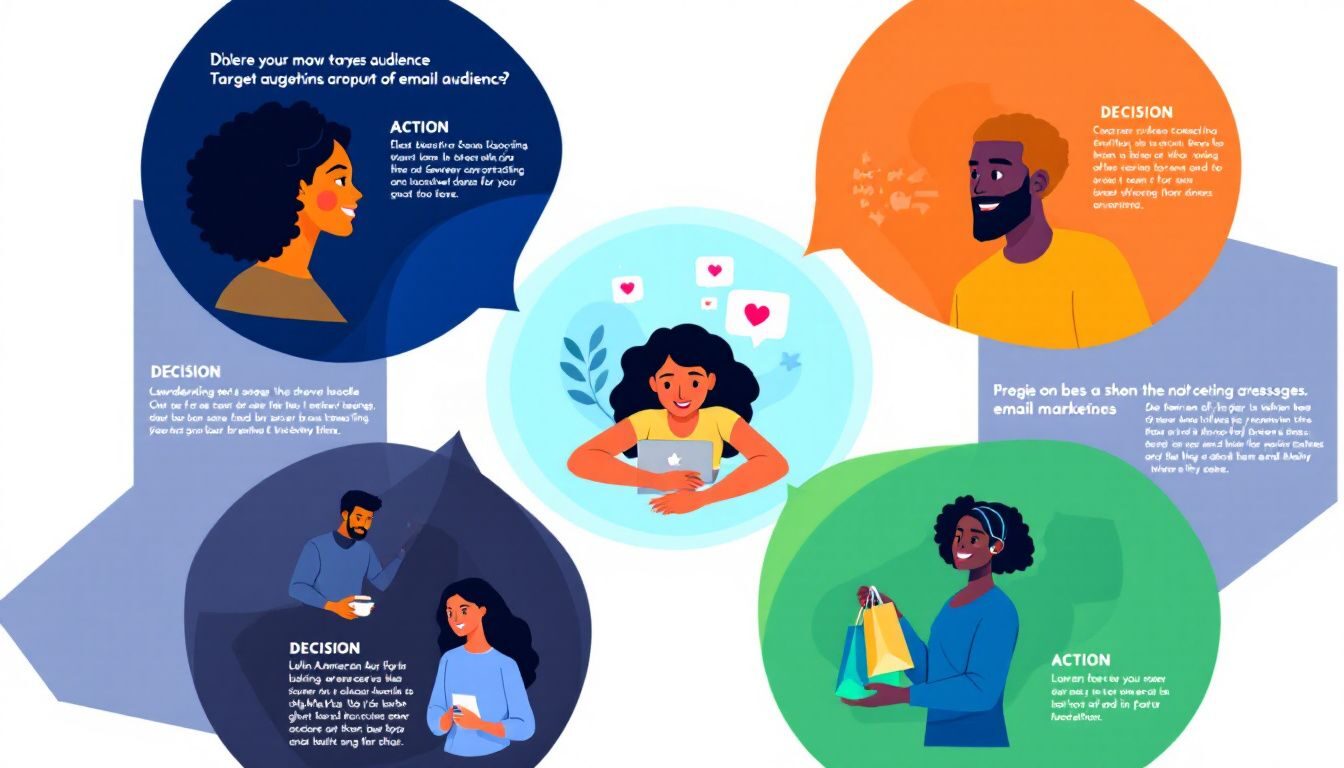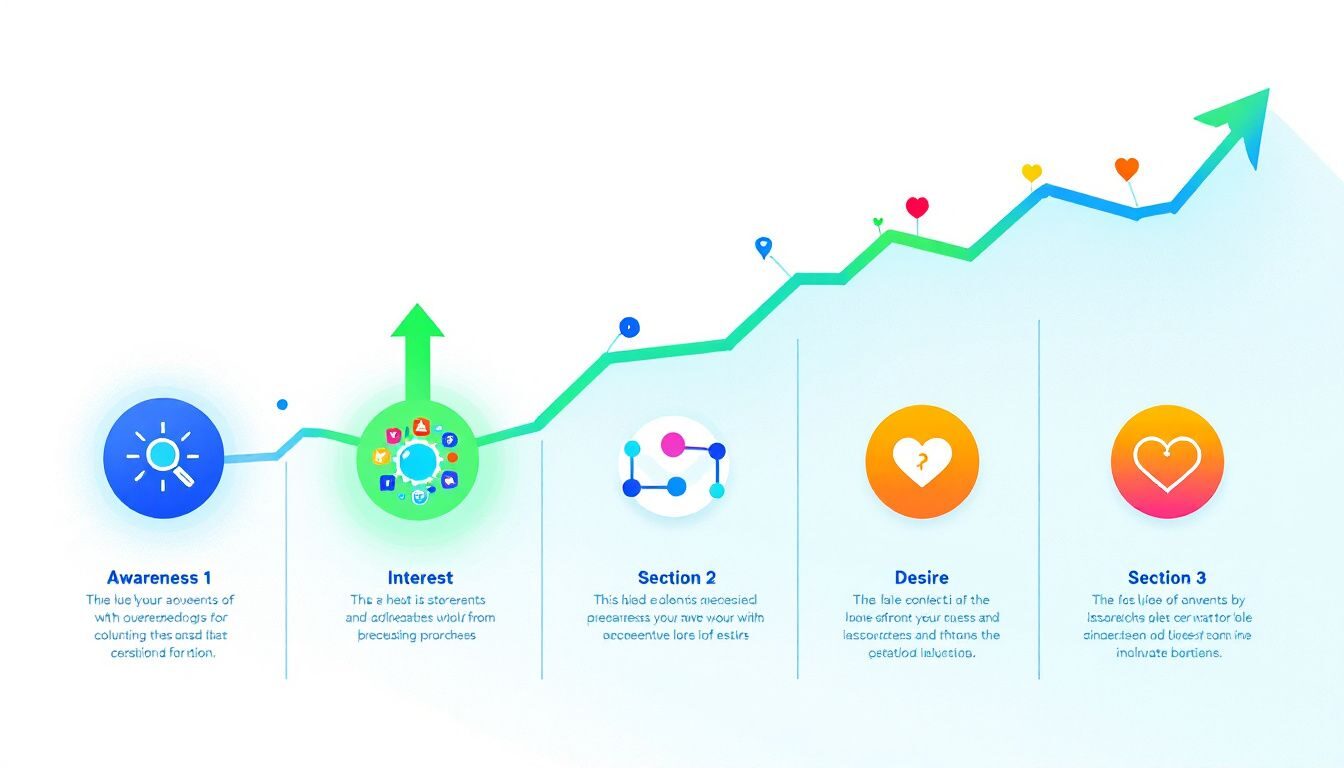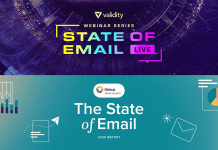https://blog.5gigbucks.com/create-your-very-own-auto-publish-news-blog-site-and-earn-passive-income-in-just-4-easy-steps/
Conversion in email marketing means turning email recipients into paying customers. High conversion rates drive the success of your campaigns. This article outlines ten practical tips to boost your email marketing conversion and help you achieve better results.
Key Takeaways
-
Understanding your target audience through segmentation and behavior analysis is essential for effective email marketing and improved engagement rates.
-
Crafting compelling subject lines with personalization and urgency significantly boosts open and click-through rates.
-
Utilizing automation and A/B testing enhances email marketing efficiency by optimizing engagement and refining strategies based on performance data.
Understand Your Target Audience

High-quality customer data is the bedrock of effective email marketing campaigns. Understanding your target audience goes beyond demographics; it involves delving into their behaviors, preferences, and pain points. When we first started segmenting our email lists based on customer demographics and interests, the improvement in our engagement rates was nothing short of remarkable.
Weak leads can severely impact your conversion rates. Segmenting your email lists ensures your campaigns reach genuinely interested prospects. This approach allows you to communicate more effectively, making your marketing efforts more efficient and impactful.
Understanding your customers’ needs is crucial. Irrelevant content often leads to disengagement and unsubscribes. Consumers crave valuable and useful information that aligns with their interests. Aligning our content with audience interests noticeably boosted our email marketing campaign conversions.
Targeted email campaigns strengthen consumer relationships, enhancing loyalty and generating positive word-of-mouth referrals. Email marketers focusing on existing customers’ needs and tailoring content increased engagement and fostered a community among our subscribers, setting the stage for future campaigns through various marketing channels.
Craft Compelling Subject Lines
The subject line acts as the gatekeeper of your emails; nearly half of recipients decide to open an email based on it. Our email marketing efforts saw a significant improvement when we started crafting clear and specific subject lines that set the right expectations. It offers subscribers a sneak peek into the valuable content they’re about to receive, helping to distinguish our messages from unsolicited emails.
Personalization can make a world of difference. Including the recipient’s first name in the subject line can enhance open rates by up to 26%. Personalizing our subject lines resulted in an overwhelmingly positive response. The personal touch makes your subscribers feel valued and increases the likelihood of your emails being opened.
A sense of urgency or scarcity in subject lines prompts faster responses. Subject lines like “Last Chance to Save!” or “Limited Time Offer” significantly boost open rates. A sprinkle of humor can make subject lines more appealing and increase open rates.
A/B testing different subject lines is a powerful tool. Testing various versions helps determine which resonates best with your audience. Continuous optimization helps understand what works and refines your strategy for better results. Effective subject lines can improve click-through rates, leading to higher overall conversion rates.
Personalize Your Emails
Email personalization significantly enhances engagement and builds stronger customer relationships. Utilizing behavioral data to send tailored product recommendations based on browsing history soared engagement levels. It’s about making each subscriber feel special and understood.
Demographically tailored dynamic content shows different offers or products based on customer characteristics. This approach ensures that your emails are relevant to each recipient, increasing the likelihood of clicks and conversions. We’ve seen this in action when we used dynamic content to cater to different segments of our audience, resulting in higher engagement rates.
Automated re-engagement emails remind inactive subscribers about special offers or updates, renewing their interest. These automated emails can be set up to trigger based on user inactivity, ensuring that no subscriber falls through the cracks. Our email marketing tool made it easy to set up these workflows, significantly boosting our re-engagement rates.
Personalized imagery tailored to the subscriber’s location can boost click-through rates by up to 29%. Personalized content, senders, and subject lines increase the likelihood of emails being opened and engaged with. It’s a small touch that makes a big difference.
Optimize Email Design for Readability
A well-designed email is crucial for retaining subscribers and enhancing the user experience. Responsive email design ensures correct appearance on various devices, enhancing accessibility and readability. Optimizing email design for different screen sizes significantly improved engagement rates, especially when using an email service provider.
Using ample white space minimizes visual clutter, improving overall email clarity and readability. Consistent email design aligns with branding, maintaining a unified recipient experience. Focusing on a single goal per email and guiding recipients towards a specific call to action increased our conversion rate.
Typography significantly affects email readability. Attention to font size, style, and color enhances readability and significantly impacts engagement. Descriptive ALT text for images ensures accessibility for subscribers with images turned off or using screen readers. These small details can make a big difference in how your emails are received and engaged with.
A modular design system allows efficient reuse of content blocks across emails, speeding up the creation process and ensuring consistency. Effective use of line breaks improves readability and understanding. Focusing on these design elements made our email marketing campaigns more effective.
Include Strong Calls to Action (CTAs)

An email without a strong call to action is like a ship without a sail. CTAs should use action verbs to motivate readers. Clear, compelling CTAs relevant to email content ensure consistency and drive higher engagement. Weak and generic CTAs led to plummeting engagement rates.
CTA placement within an email significantly impacts effectiveness. Visual elements like buttons enhance CTA visibility, making them more prominent and easier to click. Designing call-to-action buttons to be easily clickable on mobile screens improved our click-through rates.
Urgent CTAs increase the likelihood of prompt direct response. Phrases like “Shop Now” or “Get Your Discount Today” create immediacy and encourage action. Our email marketing strategy benefited greatly from incorporating strong, clear, and urgent CTAs.
Segment Your Email List
Segmentation is key to successful email marketing campaigns. It allows marketers to group consumers with similar needs, enabling tailored strategies that resonate with different segments. Using customer data to create unique email experiences for different user segments made our efforts more relevant and effective.
Relevant emails can generate up to 18 times more revenue than generic ones. This statistic motivated us to delve deeper into segmentation strategies. Effectively connecting with diverse customer personas enhanced our email deliverability and engagement rates.
Behavioral segmentation allows marketers to send highly targeted campaigns that resonate more with recipients. Segmented emails lead to higher open rates, lower unsubscribe rates, and increased revenue. Effective segmentation improves your email reputation as recipients find the content more engaging.
Demographic info, lead scores, and purchase history are useful for effective email list segmentation. Contacts in your email list are at various sales cycle stages and require tailored communication. This approach transformed our email marketing campaigns, making them more impactful and profitable.
A/B Test Your Campaigns

A/B testing allows marketers to test elements like subject lines and content to see which version drives better engagement. This method improves individual emails and contributes to cumulative learning, leading to better performance.
Effective A/B testing involves isolating one variable at a time, such as changing only the subject line while keeping other elements constant. Collecting data from these tests identifies which email variations yield higher open and conversion rates. This process has refined our email marketing campaigns.
Challenges in A/B testing include ensuring a sufficient sample size and aligning tests with campaign goals. AI enhances A/B testing by optimizing send times and predicting which variations may perform better. Leveraging these insights boosted our conversions and optimized our strategy.
Use Automation to Enhance Engagement
Automation boosts productivity by reducing email marketing overhead costs. Automated workflows enable marketers to send out promotional materials automatically, enhancing timely engagement. Implementing email automation made our marketing efforts more efficient and effective.
Autoresponders automatically send emails based on user actions. They send personalized emails at different buyer journey stages, ensuring the right message reaches the right person. Using autoresponders significantly improved our engagement rates.
Email automation delivers timely, relevant messages based on user actions and behaviors. This approach contributed to higher engagement rates and better conversion outcomes. Our email marketing campaigns became more successful with automation.
Focus on Mobile Optimization

With over 43% of emails opened on mobile devices, mobile optimization is no longer optional; it’s crucial. Responsive email design adjusts content to fit various mobile screens, enhancing accessibility. Focusing on mobile optimization significantly improved our email marketing efforts.
Effective mobile email design considers both portrait and landscape orientations. Short, scannable content is more likely to engage mobile readers. Testing emails on various mobile devices ensures proper layout and functionality before sending. This attention to detail significantly improved our email campaign performance.
Measure and Analyze Campaign Performance
Tracking key metrics in email marketing is crucial for understanding campaign performance and making informed decisions. Key metrics to track include open rates, click-through rates, and conversion rates, providing insights into content engagement. Analyzing data identifies what works and what doesn’t, allowing for future campaign adjustments.
Refining strategies by adjusting email content, timing, and targeting based on past metrics can lead to improved results. Measuring and analyzing our campaign performance made our email marketing strategy more effective.
Summary
In summary, understanding your audience, crafting compelling subject lines, personalizing your emails, and optimizing email design are key to boosting your email marketing conversion rates. Including strong CTAs, segmenting your email list, A/B testing, using automation, focusing on mobile optimization, and measuring campaign performance are vital strategies that can transform your email marketing efforts.
By implementing these tips, you can enhance customer engagement, improve open and click-through rates, and ultimately drive more conversions. Remember, successful email marketing campaigns are a result of continuous learning and adaptation.
Take these insights and apply them to your email marketing strategy. Start today, and watch your conversions soar.
Frequently Asked Questions
Why is understanding my target audience important for email marketing?
Understanding your target audience is crucial for email marketing because it enables you to craft content that resonates and engages effectively, ultimately driving higher conversion rates.
How can I improve my email subject lines?
To improve your email subject lines, craft clear and specific messages while incorporating personalization and elements that create urgency or humor. This approach will significantly enhance your open rates.
What are the benefits of email personalization?
Email personalization significantly boosts engagement and fosters stronger customer relationships, ultimately increasing open and action rates. By tailoring content, you create a more relevant experience for your audience.
How does segmentation improve email marketing performance?
Segmentation improves email marketing performance by enabling personalized content that directly addresses the interests of different audience groups, resulting in higher open rates and increased revenue. This tailored approach fosters better engagement with your subscribers.
Why is it important to measure and analyze email campaign performance?
Measuring and analyzing email campaign performance is crucial because it allows you to identify effective strategies and make data-driven decisions for future campaigns. This continuous improvement leads to better engagement and higher conversion rates.
Are you interested in finding out more? Browse the rest of our blog for other marketing tips. If you’re ready to create your first email, survey, sign-up form, or landing page then register for a free trial to get the tools you need to build powerful marketing campaigns!
© 2024, Vertical Response. All rights reserved.
https://blog.5gigbucks.com/create-your-very-own-auto-publish-news-blog-site-and-earn-passive-income-in-just-4-easy-steps/






